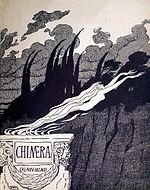Edward Okuń
- View a machine-translated version of the Polish article.
- Machine translation, like DeepL or Google Translate, is a useful starting point for translations, but translators must revise errors as necessary and confirm that the translation is accurate, rather than simply copy-pasting machine-translated text into the English Wikipedia.
- Do not translate text that appears unreliable or low-quality. If possible, verify the text with references provided in the foreign-language article.
- You must provide copyright attribution in the edit summary accompanying your translation by providing an interlanguage link to the source of your translation. A model attribution edit summary is
Content in this edit is translated from the existing Polish Wikipedia article at [[:pl:Edward Okuń]]; see its history for attribution. - You may also add the template
{{Translated|pl|Edward Okuń}}to the talk page. - For more guidance, see Wikipedia:Translation.



Edward Okuń (1872–1945) was a Polish Art Nouveau painter[1] and freemason. He painted landscapes, portraits, designed covers and illustrated magazines, including the German magazine Jugend. In his younger years he also competed as a racing cyclist in the Kingdom of Poland.[2]
Biography
Okuń was born in 1872 to a noble family and was orphaned early. He grew up with his grandparents on the maternal side. After inheriting a large fortune, he soon began drawing lessons with great painters. In 1891 he studied at the Warsaw School of Drawing. From 1891 to 1893 he studied under the direction of Isidore Jablonski and Jan Matejko at the Jan Matejko Academy of Fine Arts. He continued his studies in Munich and Paris. In 1897 Okuń went to study with Simon Hollósy who founded the Nagybánya artists' colony. For the next 20 years he lived in Rome and also traveled to Sorrento, Amalfi, Capri, Venice, Padua, Ravenna, Florence and Siena. He participated in the life of the Polish art colony in Rome, and was co-founder of the Masonic lodge "Polonia".[citation needed]
Okuń returned to Poland in 1921 and settled in Warsaw. From 1925 he was a professor in the School of Fine Arts. He was a member of the Society of Polish Artists. Together with his friends founded a Masonic lodge called "Copernicus". He was vice-president of the Society for the Encouragement of Fine Arts. During the annual opening of the Salon Incentives he witnessed the assassination of the first president of Poland, Gabriel Narutowicz, by Eligiusz Niewiadomski. He helped apprehend Niewiadomski, along with one of the president's aides.
During World War II he lived in Warsaw. After the Warsaw Uprising Okuń moved to Skierniewice, where he was killed by stray bullet in January 1945.
Art
In his paintings there are themes of a woman with long, wavy hair in Renaissance dresses which his wife posed for. He made the front wall murals of his own house at the Old Town Square.
-
 Night butterflies
Night butterflies -
 Musica sacra
Musica sacra -
 „Chimera” cover
„Chimera” cover -
 Window view
Window view
References
- v
- t
- e
















